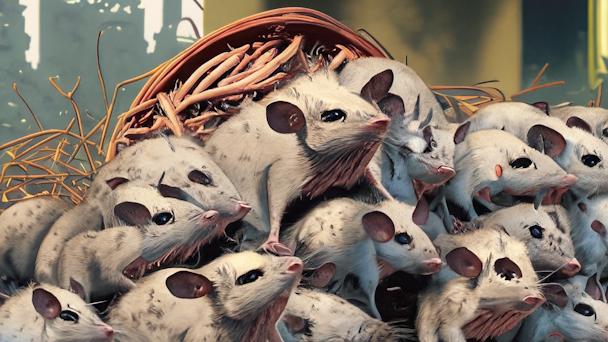How the Hanoi rat purge helps us tackle influencer image doctoring
Scott Guthrie, the Influencer Marketing Trade Body's (IMTB) director general, has been on the front-line discussions around digitally altered images on social media. Today he warns of the dangerous blunt legislation could do to the trade.

Protecting people from digitally altered image harms will demand collaborative thinking and precision in execution. Failure risks unintended consequences.
Late 19th century Hanoi had a rat problem - an unintended consequence of French colonialists building a sewer network beneath Vietnam’s capital. The sewers provided a subterranean super highway for the rats to move around the city. The cool, labyrinth of tunnels offered a rodent paradise, where the pests could breed without fear of predators. In an effort to bring cleanliness and ‘progress’ to Hanoi, the sewers brought the bubonic plague.
But fear not. There was a drastic solution on the horizon that would ultimately cause additional, unintended consequences.
Hanoi’s administrators opted to offer payment for each rat tail handed over.
Advertisement
Hustlers saw a loophole however and merely lopped tails off of living rodents before keeping them captive and breeding even more rats to harvest their tails.
In short, the initiative to rid the city of rats had the perverse outcome of causing an explosion in rat numbers.
Now back to influencer marketing. With this parable in mind, it's clear that influencer marketing now risks creating unintended consequences when tackling harms associated with digitally altered images.
Our sector continues to be a key growth priority for the advertising industry. Its global market size is set to top $21bn this year -- more than twice its 2020 market size of $9.7bn.
Maintaining that growth rate depends on building evermore professionalism within the sector. Professionalism starts with accountability. It is laudable that some agencies have made a stance against creator content produced with the aid of AI filters or Photoshop. But... appending content with a warning hashtag may do more harm than good.
Advertisement
Tackling these harms demands a collaborative and considered approach.
Digitally altered body imagery is a serious topic. Unchecked idealized media images can lead some viewers to suffer self-harm, eating disorders, anxiety, depression and lack of self-confidence. However, addressing this topic calls for both breadth and depth of thinking or we risk creating unintended consequences.
Representing the Influencer Marketing Trade Body I have twice met with Dr Luke Evans MP in recent weeks to discuss this topic. Dr Evans introduced a Private Members’ Bill -- Digitally Altered Images Bill to Parliament in 2020. These conversations have included representatives from other leading advertising trade bodies, as well as NGOs, influencer marketing practitioners, regulators and social media platform executives. While all are united in a need to protect the consumer the topic is complex, nuanced and emotionally highly charged.
It throws up myriad questions: What exactly is digital alteration? Are all uses of digital filters and image alteration harmful? Should scars, body marks and unwanted tattoos be exempt? Do we use filters in the same way across all platforms? Snapchat, for instance, is used more as a messaging tool than a content-sharing platform. Does platform choice then have an impact on the use of filters? Shouldn’t all advertising channels be part of this conversation? Why are we singling out just influencers? As creator content is increasingly pulled to the very centre of multi-channel, fully integrated marketing communications campaigns are we at risk of creating another silo just when we’re making headway at removing hurdles?
Suggested newsletters for you
What is the absolute best way to protect consumers from content which includes filters and other image manipulation? Is it an outright ban? Is it best addressed by mandating some form of disclaimer label to media images that have been digitally altered? If so would a one-size-fits-all hashtag be a blunt instrument?
Should we lean on social media platforms to do the heavy lifting to protect their users? Perhaps other corners of big tech should be harnessed to identify modified images at source? What can similar initiatives in other countries teach us? What can we learn from academia?
Might a ban on filters or use of disclaimer markers have the perverse effect of driving some influencers to turn to the surgeon’s knife rather than appear unfiltered?
Several academic experimental studies have concluded disclaimer labels on digitally-altered images don’t work. Other studies suggest these labels have unintended consequences -- these labels actually direct more of the viewer’s attention to the model’s body or body part than normal.
Influencer marketing plays a pivotal role in shaping consumer behavior. The trust our sector enjoys is earned when brands, agencies, platforms and creators act responsibly, taking seriously their obligations to each other and to consumers - especially young and other vulnerable sections.
The IMTB is committed to protecting consumers from online harms. It is working closely with its fellow Committee of Advertising Practice (“CAP”) members to consider the best option to protect consumers from advertising featuring digitally altered bodies in ads.

